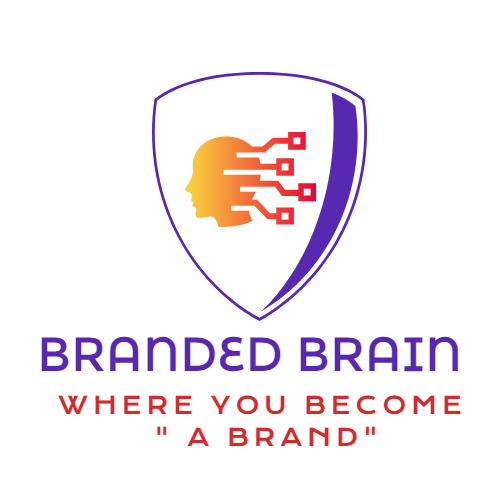Elicit | elicit research | elicit research papers | elicit ai alternative | elicit ai credits | elicit.com login | ai for | AiToolsForStudents.org | ai for students | elicit research and insights inc
- BRANDED BRAIN

- Apr 1, 2024
- 4 min read
Elicit scholar | elicit google scholar | elicit semantic scholar | elicit research review
In the vast expanse of academic research, where information flows like a river, having a reliable guide can make all the difference. Enter Elicit, your AI-powered research companion. In this blog, we’ll explore the facets of Elicit, from login to credit management, and discover its alternatives in the ever-evolving landscape of AI tools.

1. Elicit.com Login: Your Gateway to Superhuman Speed | elicit.org login | elicit ai sign up
At Elicit.com, researchers find their portal to superhuman research capabilities. By logging in, you unlock a treasure trove of features:
Automate Literature Review: Elicit accelerates the literature review process, pulling relevant papers from the Semantic Scholar corpus.
Extract Key Insights: Summarize and extract essential information from research articles.
Navigate New Domains: Whether you’re a seasoned researcher or a curious novice, Elicit guides you through uncharted territories.
2. Elicit Research Review: Unveiling the Power of AI
Elicit isn’t just a search tool; it’s an AI-powered research assistant. Here’s how it shines:
AI-Driven Literature Review: Elicit identifies top papers based on your research question, streamlining your literature review.
Beyond Keywords: No need for exact matches—Elicit finds relevant papers even without precise keywords.
Summarization and Extraction: Dive deep into articles with concise takeaways tailored to your queries.
3. Elicit AI Alternatives: Navigating the Landscape
While Elicit stands tall, let’s explore its peers:
Google Scholar: A free powerhouse for academic research.
ResearchGate: Connect with fellow researchers and access scholarly content.
Semantic Scholar: Analyze scientific papers and discover insights.
Inciteful: Enhance user experience with website insights.
Snowball: Build networks of academic papers for comprehensive analysis.
4. Elicit AI Credit: Fueling Your Research Journey
Credit System: Elicit operates on credits. When you sign up, you receive 5,000 credits.
Elicit Plus: Subscribe to Elicit Plus for additional monthly credits (up to 12,000).
Non-Transferable: Use credits wisely—they’re non-transferable.

USE OF Elicit for Students
Eliciting is a valuable technique that educators use to engage students actively in the learning process. Let’s explore how it can benefit students:
Active Participation:
Eliciting encourages students to actively participate rather than passively receive information. Instead of directly providing answers, teachers prompt students to think, discuss, and express their ideas.
Vocabulary and Language Learning:
Antonyms/Synonyms: Teachers can ask students for the opposite of a word or provide a similar word to elicit vocabulary.
Definitions: Describing a word or using a dictionary definition can help students recall vocabulary.
Contextual Reminders: Reminding students of when they previously learned a word and providing context helps reinforce their memory.
Concept Exploration:
At the start of a lesson, eliciting can be used to brainstorm topics or activate prior knowledge. For instance, students can generate ideas related to a specific theme or subject.
Visual prompts, such as pictures or diagrams, encourage students to express themselves.
Language Production:
When discussing grammar rules or language forms, teachers can elicit examples from students. For instance, instead of directly stating the past tense of a verb, teachers can ask students to think about it.
Eliciting encourages students to produce language spontaneously.
Critical Thinking and Problem-Solving:
Eliciting challenges students to analyze, infer, and draw conclusions. It fosters critical thinking skills.
By asking open-ended questions, teachers promote deeper understanding and exploration.
Engagement and Confidence:
Active participation boosts student engagement and confidence.
When students contribute their ideas, they feel more involved in the learning process.
Elicit research papers | elicit research | elicit research and insights inc | elicit ai crunchbase
Elicit, an AI-powered research tool, assists researchers in automating various tasks related to literature review and paper analysis. Here are some key features and common use cases:
Search and Summarize: Researchers can enter their search queries into Elicit’s search bar. The tool then delivers summaries of relevant research papers, along with citations and key findings. It’s like having a superhuman assistant for your literature review!
Automate Systematic Reviews: Elicit helps automate systematic reviews and meta-analyses. It can quickly find papers that might be challenging to locate elsewhere.
Empirical Domains: Elicit tends to work best for empirical domains involving experiments and concrete results. These domains are common in fields like biomedicine and machine learnin
Data Sources: Elicit searches across a vast database of 200 million academic papers from the Semantic Scholar corpus, covering various disciplines
Accuracy: While Elicit strives for accuracy, it’s essential for researchers to verify the information closely. Approximately 90% of the information in Elicit is accurate, but always double-check.
Elicit Plus: Elicit offers a subscription called Elicit Plus, which includes additional features and monthly credits. On Elicit Plus, users can utilize up to 12,000 credits per month.
Contacting the Elicit Team | elicit ai crunchbase
Have feedback or questions? Reach out via email: info@elicit.com. Join the Slack community for discussions. Your input shapes Elicit’s evolution.
In the realm of AI-assisted research, Elicit is your compass, guiding you through the scholarly wilderness. Let’s embark on this journey together!
Disclaimer: This blog post is for informational purposes only. Always verify information from primary sources and consult scholarly works directly.



Commentaires